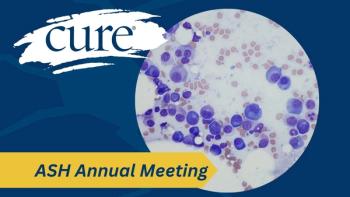
Determining Staging and Risk in Multiple Myeloma
Transcript:
C. Ola Landgren, MD: I wanted to spend some time talking about some of the more technical pieces that refer to the disease characterization. Myeloma can be very different. In different individuals that have the same diagnosis, the biology of the disease can be different. When you first came to me, I told you a lot of information. Had you ever heard about things like staging or cytogenetics or FISH markers or things along those lines?
Aurora Torres: I had heard of staging in cancer. But the other terms that you used—no, I never had. I picked that up when I looked at the information that was given to me by the LLS. Then, I had a little bit more of an understanding. But before that, I had never heard of them.
C. Ola Landgren, MD: Multiple myeloma is a very complicated disease. If doctors were to apply current research assays to sequence the tumors to understand something called somatic mutations, it is possible that there could be hundreds of mutations in an individual patient. And, if we, in the computer systems, put all of that information together, we can actually see that each and every person who has myeloma could have 5 or 10 different myelomas going on at the same time in the body.
There are things that we are testing—we have used what are called FISH cytogenetic assays. These are not the most sophisticated of tests. These are tests that are evaluated and validated for clinical use at the current time. I think that in a couple of years, those tests will probably go away. We will use more sequencing-based assays. With the FISH and cytogenetic markers, we can look for certain larger alterations in the tumor cells—genetics—and we can see if the patient carries certain markers or not. We can use those to predict if the disease is going to be more of a higher-risk disease or if it’s going to be a more standard-risk scenario.
That being said, with better and better therapies, those things are changing. To be very specific, in the past, when we found certain markers in people with myeloma with older therapies, if a person had certain markers, that could be a worse prognosis. But, with more modern therapy, those markers may not make a difference. The therapies are so much better. So, a lot of the former high risk has gone away because the therapies are so much better. I think the whole literature on high-risk disease is actually undergoing major changes, but there are markers that we are still looking for. In your case, you did not have any of these markers. Also, there is this literature on staging. You had heard about that in cancer, you said?
Aurora Torres: Right.
C. Ola Landgren, MD: Staging, in myeloma, is quite outdated. It was actually initially proposed in the 1970s. That’s a very long time ago. That was 50 years ago. There was this idea 50 years ago that considered a patient who had more cells versus a patient with fewer cells. That was important. In other diseases, if you have a primary disease—for example, breast cancer—and if you have the disease spread to the lungs or elsewhere, that would be something that we would refer to as the stage being more advanced. There were different staging systems for these different diseases. For myeloma, which is a disease of the bone marrow, it’s assumed that the disease is spread throughout the marrow in each and every person. It’s just a matter of how many cells there are. But, with more advanced and better drugs, even if there are many cells, those drugs can get rid of all of those cells anyway. So, staging is less important in myeloma.
I think the most important thing right now is really the genetic signatures. The sequencing technology will probably replace, I think, all of the FISH and cytogenetics and, for sure, all of the staging. There is literature that says that more advanced stages would be based on albumin, beta-2 macroglobulin, lactate dehydrogenase, and the cytogenetics. You can make up different numbers and define a certain stage, and that will impact the prognosis. I think these things are changing. With better drugs, everything is looking better and better every day.
In your case, you had standard-risk cytogenetics and FISH markers. If you just plug in these numbers by stage, it could be the stage II number. It’s almost stage I, but it was stage II, if you just read the exact numbers. The idea is, with more advanced stages and with certain high-risk features that you didn’t have, the duration of benefit of therapy would be shorter, so the progression-free survival would be shorter. So, in a person where you have these features, you would have to restart some other therapy quicker. You did not have any of those features.
Transcript Edited for Clarity




